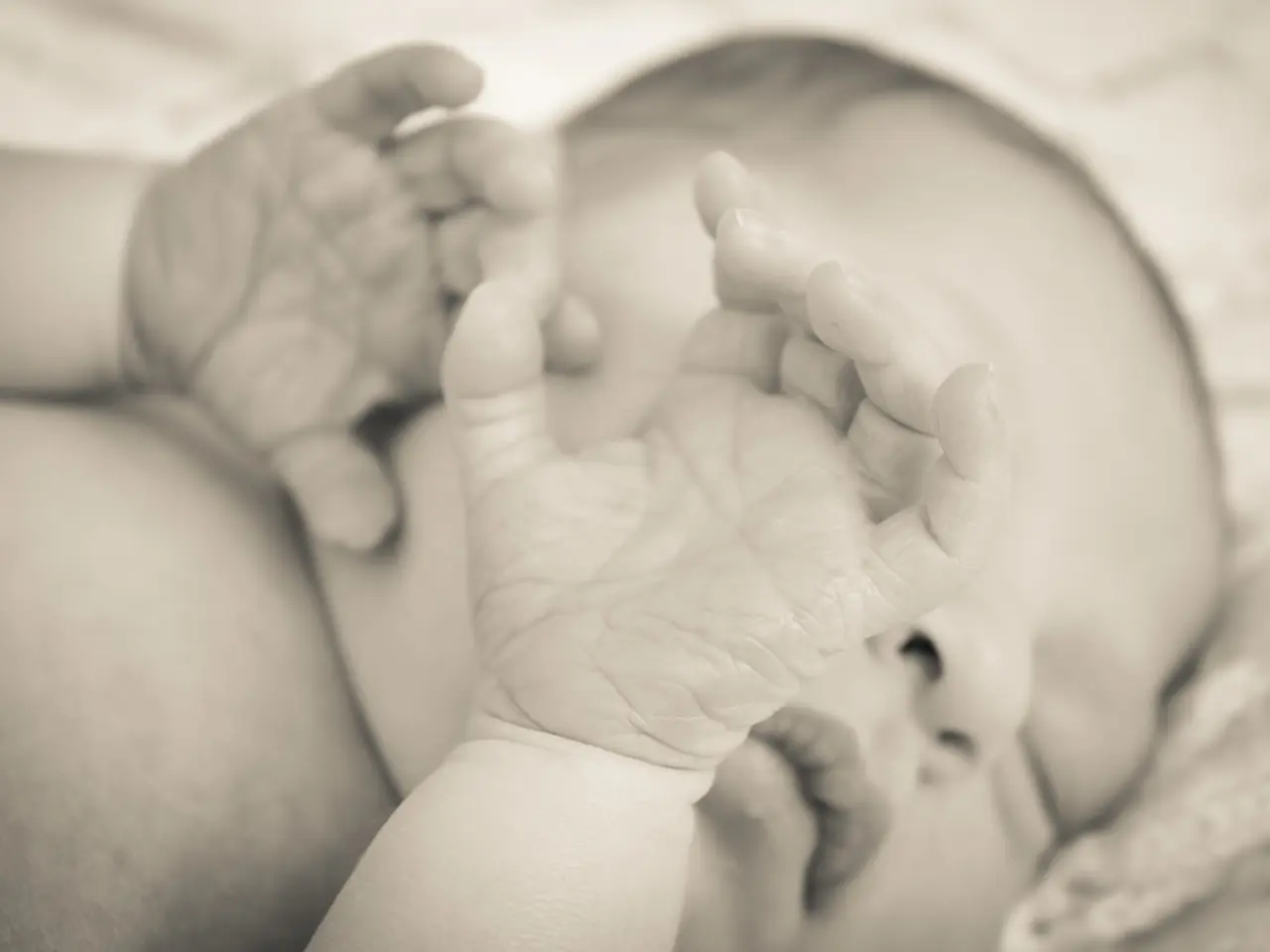Newborn Lung Pressure Elevations: Symptoms and Additional Knowledge
Persistent Pulmonary Hypertension of the Newborn (PPHN): Long-term Health Implications for Survivors
Persistent Pulmonary Hypertension of the Newborn (PPHN) is a disorder that affects newborns, causing difficulties in the natural circulatory changes following birth. If left untreated, PPHN can lead to a variety of health issues, some of which can persist even after recovery.
Upon birth, the blood vessels in a newborn's lungs should widen, but in PPHN, the pulmonary arteries do not dilate enough, limiting blood flow to the lungs. This condition can be triggered by various factors such as low oxygen levels, breathing problems, severe distress during delivery, infections, problems with the placenta, congenital abnormalities, collapsed lung, and certain drugs taken during pregnancy.
Symptoms of PPHN at birth or within the first hours of life may include rapid breathing, shortness of breath, cyanosis or pale blue color of the skin, low blood oxygen levels, low blood pressure, heart murmur, and weak pulses. A pediatrician will check the baby's health status and delivery history, and an echocardiogram is used to establish a diagnosis of PPHN and look for structural heart diseases.
Blood tests are conducted to measure the level of oxygen and carbon dioxide in the blood, look for signs of infection, monitor for conditions such as polycythemia and hyperviscosity syndrome, and check glucose and serum electrolyte levels. Different medications can help treat PPHN, depending on the underlying cause and related symptoms. An X-ray checks for underlying lung or heart disease, including meconium aspiration syndrome and pneumonia. Monitoring oxygen saturation levels is essential to see whether the newborn's tissues are receiving enough oxygen.
Approximately 25% of infants who survive PPHN experience adverse outcomes, including developmental delays, hearing problems, and functional disabilities. Cognitive and motor skill impairments can occur, potentially affecting growth and neurological function. Sensorineural hearing loss is a noted complication in some survivors, while others may have decreased physical abilities, impacting everyday activities and requiring ongoing support.
Neurological impairments can arise, especially if there was significant hypoxia or the need for extensive respiratory support. Some infants may develop chronic lung conditions owing to prolonged ventilatory support or oxygen therapy. In severe cases, extracorporeal membrane oxygenation (ECMO) may be used when all other approaches fail to increase the newborn's oxygen saturation levels and takes over the functions of the lungs and the heart.
PPHN occurs in 2 out of every 1,000 live births and is more common in full-term babies, those born past their due dates, and those born after 42 weeks. Despite advances in care, it is still one of the leading causes of morbidity and death among babies, reaching a 4-33% mortality rate.
In summary, the major long-term issues associated with PPHN include developmental delays, hearing impairments, and physical disabilities, affecting about one-quarter of survivors. It is crucial for parents and healthcare providers to be aware of these potential complications and provide appropriate support and care for affected infants.
[1] Centers for Disease Control and Prevention. (2021). Persistent Pulmonary Hypertension of the Newborn (PPHN). Retrieved 15 February 2023, from https://www.cdc.gov/ncbddd/pphn/facts.html
Science and medical care play crucial roles in managing the health and wellness of children affected by Persistent Pulmonary Hypertension of the Newborn (PPHN). This neurological disorder can lead to mental-health issues, developmental delays, and functional disabilities in survivors, with some experiencing hearing problems, cognitive impairments, motor skill impairments, and sensorineural hearing loss. Neurological disorders may also arise due to significant hypoxia or the need for extensive respiratory support. Healthcare providers should be aware of the potential long-term implications for survivors, such as chronic lung conditions and the need for ongoing support, to ensure they receive appropriate care.




